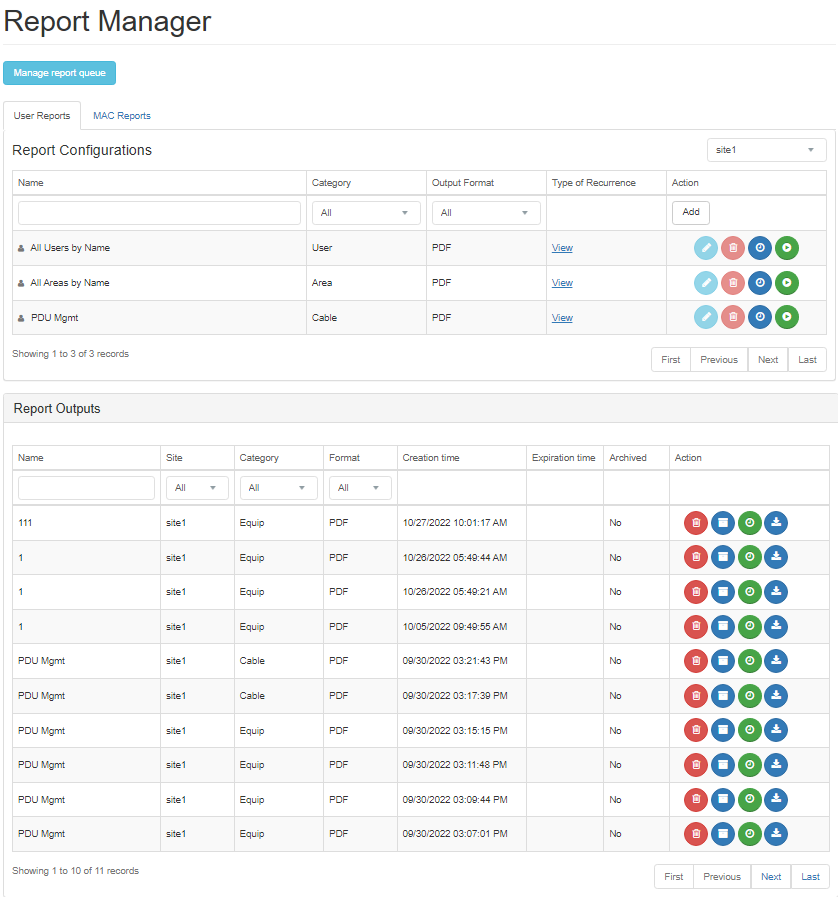4.1.3. Reporting
IRM Reporting leverages the BIRT system to provide a comprehensive reporting mechanism.
There are a few different stages in the reporting system:
-
A Report Definition file (.rptdesign) is created using a standard BIRT report editor.
-
The Report Definition file is uploaded into the relevant Report Category, via a UI in the IRM Web Client.
-
The Report Configuration is created against a specific IRM Site and includes other parameters such as a filter and an output format.
-
The Report Configuration is executed, either ad hoc, or automatically according to a schedule, and produces the Report Output file.
-
Execution is done by the BIRT report engine running under the control of IRM on an IRM server.
-
Ad-hoc execution can be done either from the Web Client or from the Global Console, while scheduled execution is set up from the Global Console.
-
The report output can be downloaded, deleted, archived and scheduled for run using the Web Client or the Global Console UI.
The above stages are typically handled by different people in an organization:
-
Report Definition files are created by report design engineers who are familiar with both the BIRT reporting system and IRM REST API Schema.
-
IRM provides a number of pre-built report definitions to meet most organizations reporting needs, minimizing the need to create new report definitions.
-
Existing Report Definitions can be copied and used as the starting point for any customized report.
-
Planet Associates can provide assistance with defining or modifying a Report Definition files
-
Planet Associates provides a Report Validation program to confirm if report is structured correctly and fully optimized (contact Planet Associates for details).
-
Report Configurations are typically set up by IRM system administrators, but can be executed by any IRM users with correct permissions.
-
Report Output can be viewed by ordinary IRM users or by managers and executives who are interested in the information in the reports.
-
Report Output can be downloaded from the Global Console Interface.
-
Global Console Interface provides similar capabilities as found in the Evolution web Portal for managing report outputs.
IRM Reporting can be access from two places in the application:
-
Global Console - by selecting the "Reporting" navigation menu
-
Site - by clicking on the "Report" button, which is above the Object Grid in the IRM Web Client.
Global Console Reporting
The Global Console Reporting menu is used to create and manage Report Configurations and Report Output files.
It is divided into two separate sections:
-
the top section lists the existing Report Configurations
-
and the bottom section lists the results from executing a report Configuration - Report Outputs
Both grids list some basic properties and additional action buttons for managing each entry:

The screenshot image above displays the Global Console Report Manager page, while the following subtopics explains each in detail.